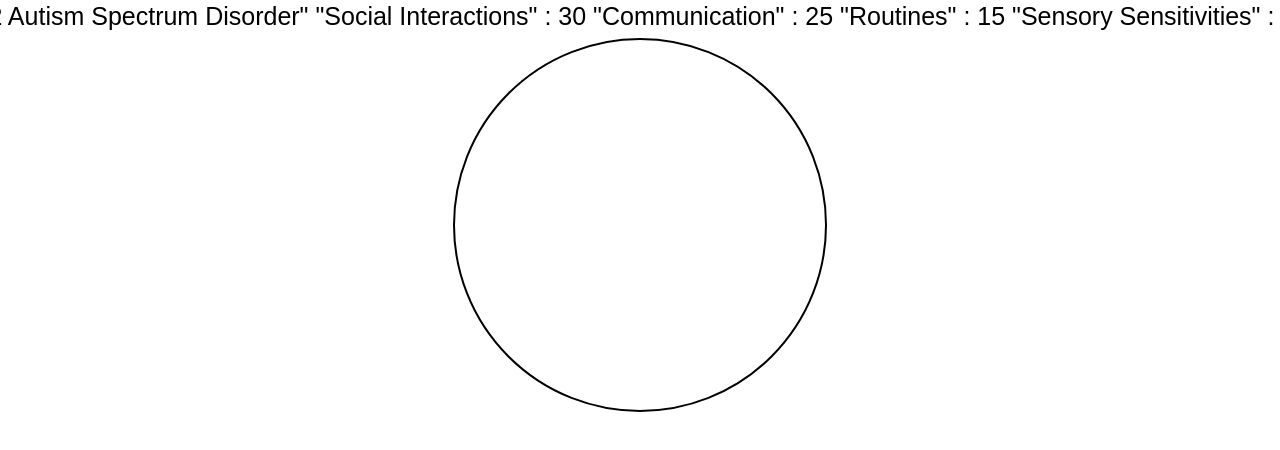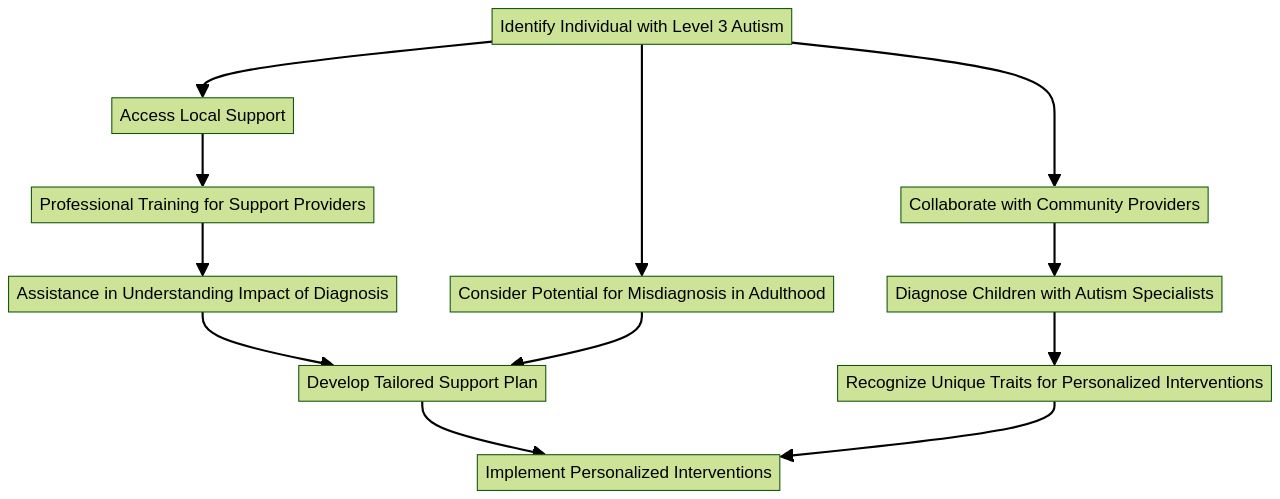Introduction
Autism spectrum disorder (ASD) is a complex neurodevelopmental condition that manifests in different levels of severity. In this article, we will explore the three levels of ASD and the support required for individuals at each level.
From Level 1, which requires some support, to Level 2, which requires substantial support, and finally Level 3, which requires very substantial support, we will delve into the challenges faced by individuals with ASD and the importance of personalized interventions. Join us as we navigate the complexities of autism and provide guidance for parents and caregivers in supporting their loved ones on the spectrum.
Level 1: Requiring Support
Autism spectrum disorder (ASD) is a complex neurodevelopmental condition, with Level 1 ASD being the mildest form, often necessitating some support. Those with Level 1 ASD are known to face challenges in social communication and repetitive behaviors, which can be subtle but impactful.
For instance, a five-year-old boy with ASD and Avoidant/Restrictive Food Intake Disorder (ARFID) faced barriers to care due to social determinants like lack of health insurance, housing instability, and low income. These factors underscore the importance of a multidisciplinary approach to treatment, which is particularly challenging in healthcare systems like in the United States, where access to care is often contingent on insurance coverage.
Studies highlight the variability in social communication abilities among individuals with ASD. For example, research involving non speaking teens and adults with autism revealed significant challenges in social responsiveness, despite some being able to use an iPad to communicate.
These findings emphasize the need for tailored communication strategies. Early intervention is critical, as motor skills in infancy may indicate the etiology of ASD.
It's important to note that ASD's core features should be present in early childhood, although they may not be fully apparent until later due to coping strategies. Accurate diagnosis necessitates observation by skilled professionals, and ideally, a multidisciplinary team. Statistics reveal that boys are about four times more likely to be diagnosed with autism than girls. In Australia, the prevalence of autism has risen significantly, with current estimates indicating that 1 in 36 children are diagnosed with ASD. Challenges in education are common, with 85% of school-aged children with autism reporting difficulties, and early diagnosis is crucial for accessing services. The disparity in diagnosis rates among different ethnic groups indicates a need for increased awareness and access to healthcare services to ensure early identification and support for all children with ASD.
Level 2: Requiring Substantial Support
Children and adults with Level 2 Autism Spectrum Disorder (ASD) require substantial support to manage everyday activities. This support extends beyond the challenges faced by those with milder forms of autism.
For example, while some individuals may be verbal and able to make eye contact, albeit briefly, they might still struggle with the subtleties of social interactions and communication. They may exhibit a strong preference for routines and show distress when facing changes.
Lining up toys, selective eating habits, and sensitivity to certain clothing textures are among the behaviors that indicate the need for additional support. The unique experiences of individuals with autism, such as those faced by Harrison Geraghty-Anthony, emphasize the importance of tailored interventions.
After receiving a diagnosis, his parents sought treatment that would allow him to thrive in school, eventually finding success with a Spanish psychiatrist. This international collaboration underscores the challenges parents face in securing the right support, sometimes having to navigate systems across borders.
Recent research has shifted the focus from the age of diagnosis to the significance of understanding individual characteristics of autism. A study involving 300 autistic adults found gender and autistic personality traits to be more indicative of life quality than the timing of diagnosis. These findings are crucial as they highlight the need for personalized support that considers the unique aspects of each individual's condition, rather than a one-size-fits-all approach. Understanding these nuances is vital for anyone who suspects they or a loved one might be on the spectrum, as the signs of autism can be diverse and evolve over time. Recognizing and addressing these needs can lead to more effective support and an improved quality of life for those with autism.

Level 3: Requiring Very Substantial Support
Individuals with Level 3 autism, also known as requiring very substantial support, face profound challenges in social interaction, communication, and behavior. They often need intensive supervision and assistance, and may struggle to articulate their needs or comprehend others.
This severity of autism is sometimes linked with intellectual disabilities and adaptive functioning difficulties. Recent research emphasizes the importance of personalized support for autistic adults, highlighting the need for local support access, professional training, and assistance in processing the impact of a diagnosis.
A study involving 43 autistic adults underscored the value of a tailored support plan post-diagnosis. Another aspect of autism in adulthood is the potential for misdiagnosis, as evidenced by a psychologist's personal journey through misdiagnosis before accurately identifying her autism.
This underscores the complexity of adult autism, which may manifest differently than in children. A study by Keehn et al. found that trained community providers could align with autism specialists in diagnosing children in 82% of cases, which could alleviate the long wait times for specialist appointments. Moreover, research suggests that while social integration and mental health can be serious concerns for adults with ASD, individual characteristics may play a more crucial role in life quality than the timing of diagnosis. This points to the need for focusing on personalized interventions that cater to the unique traits of each individual with autism.

Conclusion
In conclusion, autism spectrum disorder (ASD) encompasses three levels of severity: Level 1 requiring some support, Level 2 requiring substantial support, and Level 3 requiring very substantial support. Each level presents unique challenges for individuals with ASD and their families.
Early intervention is critical in identifying and addressing the core features of ASD. Accurate diagnosis by skilled professionals and a multidisciplinary approach are necessary to provide tailored support at each level.
Increased awareness and access to healthcare services are needed to ensure early identification and support for all children with ASD. Personalized interventions that consider individual characteristics are crucial in supporting individuals with ASD.
Tailored communication strategies, local resources, professional training, and assistance in processing the impact of a diagnosis can greatly improve the quality of life for individuals on the spectrum. Parents and caregivers play a vital role in advocating for their loved ones with ASD.
By seeking appropriate resources and guidance, they can navigate the complexities of autism and ensure the well-being of their children. Understanding the unique experiences of individuals with autism can help parents overcome barriers to care, such as navigating healthcare systems across borders. Overall, by recognizing and addressing the needs of individuals with ASD at each level, we can provide effective support that improves their quality of life. It is crucial to promote awareness, access to services, and personalized interventions that cater to the unique traits of each person on the spectrum. Together, we can empower individuals with ASD to thrive and reach their full potential.




